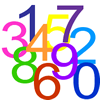
list
Algebra in the new curriculum
Algebra is only formally mentioned in the new National Curriculum at Year 6. However, we can encourage algebraic thinking from a much younger age. In her article, Anne Watson suggests ways of developing an algebraic, structural understanding of number and arithmetic. Lynne's article builds on this by explaining how the chosen tasks below support Anne's advice.

